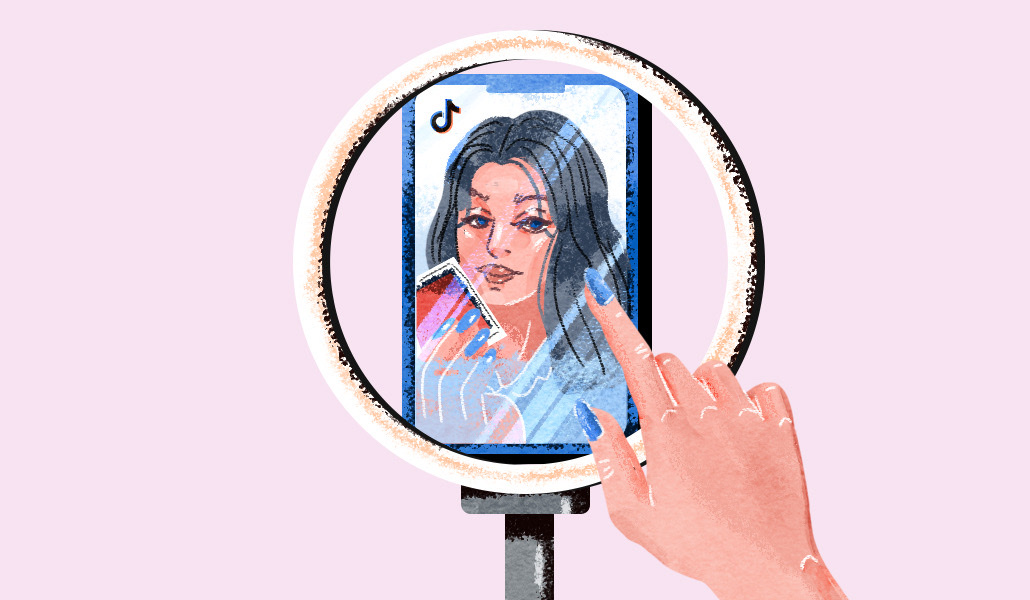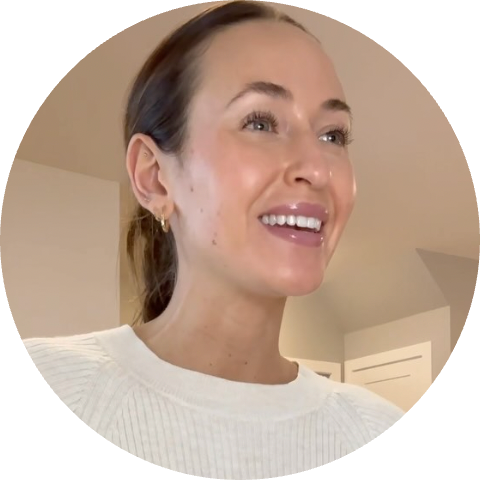TikTok Trend Watch: Here’s how one workplace influencer made TikTok her full-time job

The work side of TikTok is exploding.
On the app, #WorkLife has 30.6 billion views, from content that ranges from day-in-the-life depictions to videos about work dramas and hilarious coworkers. #WorkTok has an additional 2.4 billion views, and #CorporateTikTok has 4.9 billion views. Between each of those hashtags, creators are rising to the surface and taking advantage of the reliability of the content that can be made on this platform.
Some of these workplace influencers have kept their day jobs to ensure there isn’t a shortage of story ideas, while others have decided to take the plunge into full-time content creation. And it’s possible in part due to paid partnerships. When you’re scrolling through the app, you might see more and more videos with the paid partnership tag on it.
So how does a workplace content creator leverage these partnerships and monetize their videos and brand?
We spoke to one influencer, Laura Whaley, aka @loewhaley, who has nearly 4 million followers on the app, to learn how she went from a job in IT to working with brands like Canva to make her own templates, Norton, Amazon and more to share workplace-related tips.
Answers were edited for clarity and flow.
Take me back to the beginning.

At the time, I worked in IT. I worked on a phenomenal team and was working specifically in e-commerce. I was completely virtual at the time. When everyone was kind of sent to work from home, our entire working landscapes were kind of flipped upside down. And to be honest, I was just so bored and isolated and pretty lonely at the time. The biggest thing going on for me was work. So through sharing these experiences online of just stuff that seemed mundane of my working life, a lot of people were starting to like my videos. They were gaining traction and the comment section was saying ‘I thought I was the only one experiencing that.’ It started to create this community.
Today, you’re seeing a lot of success on your account. Why do you think it resonates so much with viewers online?
As work has evolved, we’ve kind of seen a lot of really important discussions come up through social media, whether it’s salary transparency, understanding workers’ rights, how to cope with an overbearing workload. I think work is something many of us do, and it’s a very relatable, large component of our life. I think that’s why it continues to do quite strongly.
Did you imagine when you were working in IT that one day you’d be sharing career advice to millions of people on TikTok?
I’ve always been someone that has questions [about] why things are done. I never took things as ‘oh this is how we do them, so let’s just do them.’ I’ve kind of always been a bit of a boundary pusher in that sense. Even when I had started my career, I was kind of questioning things or reframing or seeing if there’s potentially alternate ways that would better serve the workforce of how to do things. So if you told me at the time where I’d be now, I’d be like that’s crazy, I don’t even know what you mean. But it’s been a really fun journey. It’s really validating for me when I can actually help people in their real life, which is why I was so excited to partner with Canva recently to offer a variety of templates to give people a starting point and the confidence if they have a huge presentation coming up. I’ve had the opportunity to create this tool to be able to help people. I’m so passionate about it because I can provide entertainment, but then I also get these amazing opportunities to potentially make someone’s life easier or make their workflow more efficient. That’s been great.
How did you go from creating entertaining videos to partnering with brands like Canva?
It’s important for me to have effective brand partnerships for the brand, but also for my audience. I want things to be entertaining and educational, especially if I’m highlighting something I use in my day to day life. But I also want to make sure that they’re watching it all the way through so they’re like ‘oh, that’s a really cool tool, thank you for letting me know, and also thank you for the laugh.’ For me, it’s really important when I’m working with brands to have people on the back end of that brand that are open to different creative directions. It’s very much a collaboration and working together: what do you think about this idea?
And it’s usually brands where I am familiar with their product. And I feel like it can add value to my audience’s lives ultimately.
I’ve been a long time user of Canva. It’s been something I’ve used in my workflow for many, many years. When they connected with me, I was so familiar with their tools, but not their AI tools they had recently launched. It completely blew my mind and created a more efficient workflow for me to do day to day tasks. So this is a partnership I’m really excited and passionate about. It’s one of those pinch me moments.
With brand partnerships and content creation, does that mean that it’s your new full time job?
My nine to five has definitely changed since I started on the platform. My nine to five now is digital media and content. I actually own my own corporation now and I have my own team. So we do a lot of things and it’s a very similar working structure to the nine to five corporate job I was working prior to this. Not a lot has really changed. It’s more the outputs that have changed. That’s where I’m at now.
We’re seeing a huge rise on the work side of TikTok. Do you think that brands are going to continue to reach out to content creators for partnerships there?
Speaking as a consumer, when I’m able to see a familiar face through the screen, someone I’ve kind of built this digital relationship with, speak about something, it resonates a little bit deeper with me. I trust that they use the tool in their day to day life and they are backing what they’re saying. I think influencer marketing is such a powerful tool and it’s continuing to grow year over year. Moving forward, I continue to see this industry growing, which means you really need to keep that trust with your audience of ‘I’m not just going to partner with anyone and throw any product at you.’ You have to keep the trust of ‘this is a product I use and really believe in.’ I think that’s a really effective way of making this sustainable in terms of being an influencer and having these partnerships.